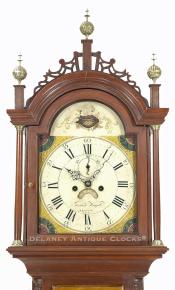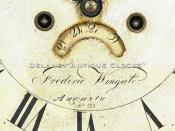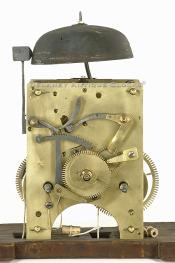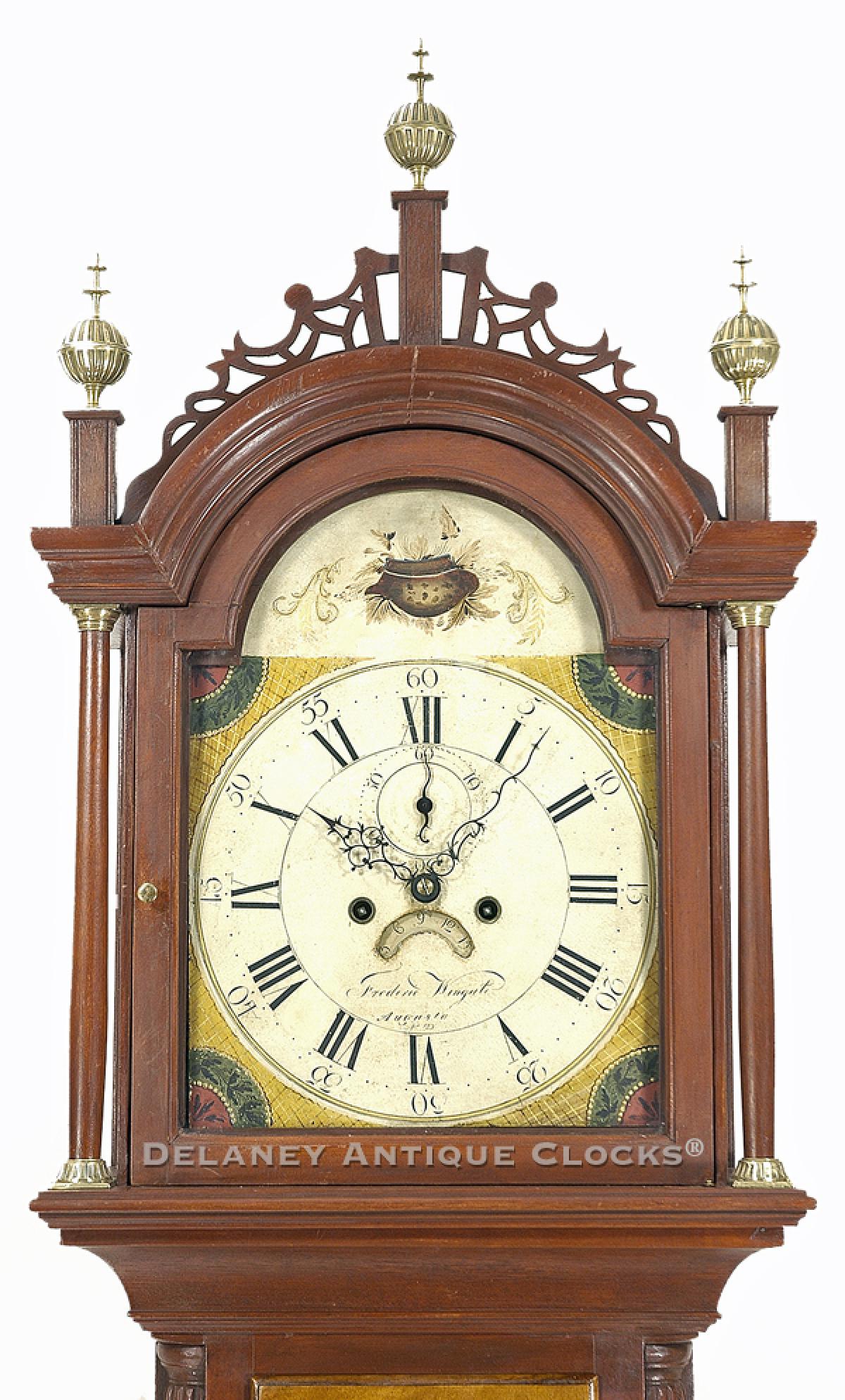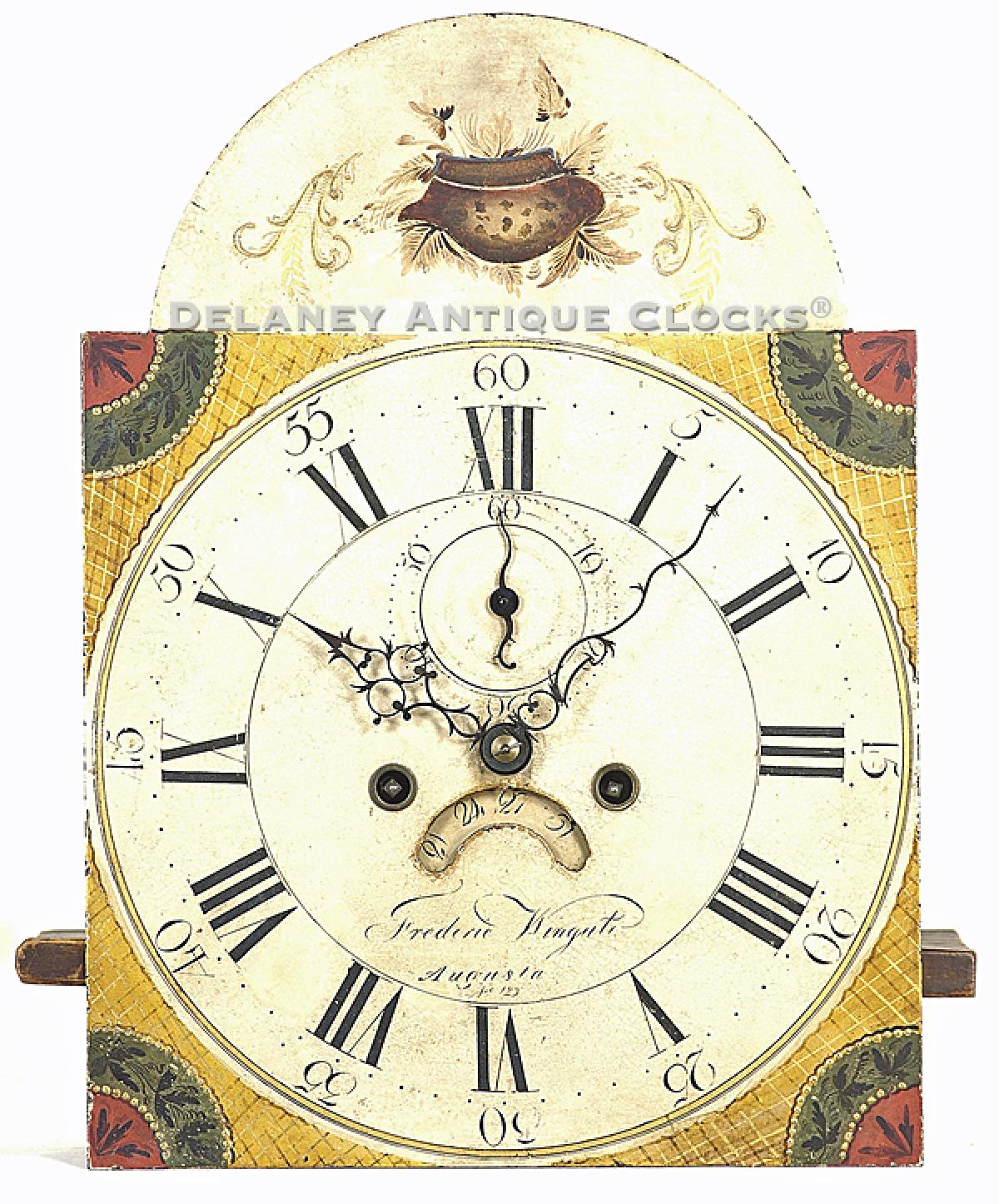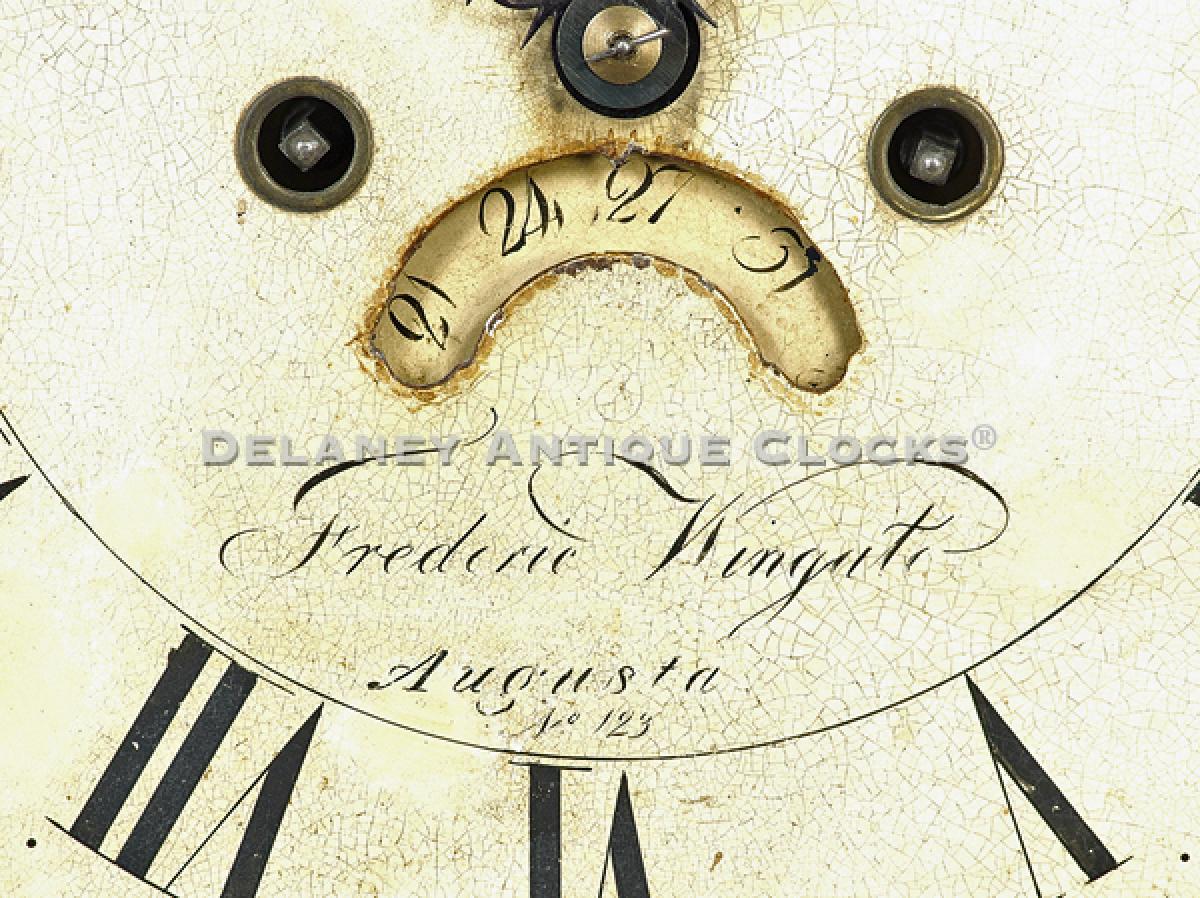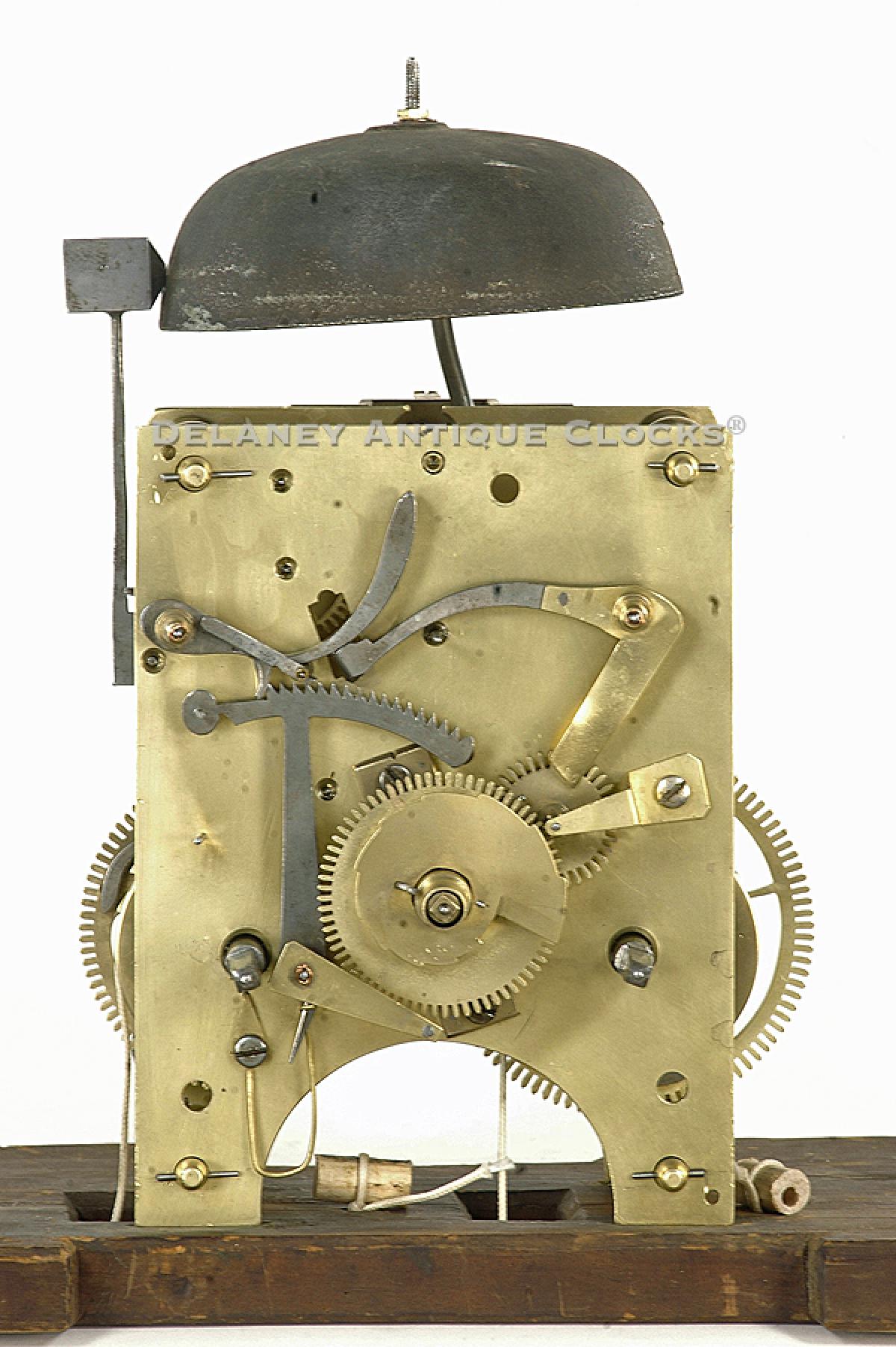Frederick Wingate of Augusta, Maine. No. 123. A Maine Clockmaker. A Maine tall clock. UU-73.
This is a well-proportioned mixed woods case tall clock made by Frederick Wingate of Augusta, Maine, circa 1813.
This country form features a case constructed in several indigenous kinds of wood. The vast majority of which is birch and retains its original red wash. This is a process that was common to clocks of this region. Many speculate that it helped disguise the local wood to look more like imported mahogany. Interestingly, the waist door is constructed in figured maple. The lighter coloring of the maple contrasts sharply with the darker red wash. In addition, the grain pattern exhibited in the light maple wood shows good tiger striping. This is quite nice and eye-catching. The secondary wood is New England white pine. This case stands on cutout bracket feet that retain excellent height. They are visually separated from the base section with simple applied molding. The maple waist door is rectangular and is trimmed with a molded edge. The front corners of the waist section are fitted with turned quarter columns. These are nicely formed, having some shaping and additional ring-turned designs. Both of these terminate in turned wooden quarter capitals. The bonnet features a New England-style fretwork pattern. This is a pleasing design that includes three original brass finials that are mounted on top of the finial plinths. The bonnet columns are smoothly turned and subtly shaped. They are free-standing and secured in brass capitals. The arched-shaped bonnet door is fitted with glass. This door opens to access the clock's dial.
The iron dial is colorfully painted and is of Boston origin. It exhibits many design elements and the coloring of dials painted by Spencer Nolen. Nolen rented shop space from his father-in-law Aaron Willard in Boston. This dial is also signed by the clockmaker in script lettering, "Frederic Wingate." This signature area also includes his working location, "Augusta," and is numbered "No. 123."
This fine movement is constructed in brass and is of good quality. Four-turned pillars support the two brass plates. Hardened steel shafts support the polished steel pinions and brass gearing. The winding drums are grooved. The escapement is designed in a recoil format. The movement is weight driven and designed to run for eight days on a full wind. It is a two-train or a time-and-strike design having a rack and snail striking system. As a result, it will strike each hour on the hour. This is done on a cast iron bell mounted above the movement.
This clock was made circa 1813.
Inventory number UU-73.
Frederick Wingate, silversmith, watch, and clockmaker, was born in Haverhill, Massachusetts, on January 11th, 1782, and died in Augusta, Maine, on November 16th, 1864. His parents were William Wingate (1745-1821) and Mehitable (Bradley) Wingate (1747-1796). He had an older brother, Paine Wingate (1767-1833), who was working in Boston as a clockmaker as early as 1789. Paine may have trained Frederick. Frederick married Hannah Page of Haverhill on January 17th, 1806. In 1814, he served as a soldier during the War of 1812.
Frederick worked as a silversmith, watch, and clockmaker and became one of Maine's most prolific clockmakers. He may have been trained in Massachusetts before he moved north to Augusta, Maine, by 1803. As a clockmaker, he made many tall, banjo, and mirror clocks. Many of the tall clock dials are numbered. Our family has recorded examples from low as number 15 to a high of 302. Frederick trained Benjamin Swan to make clocks in 1808. Swan was from Augusta, and his clocks are often very similar in form. They share similar characteristics, such as the use of contrasting woods. Reoccurring features found on many Augusta clocks are the use of figured maple in the waist door and base panel, unusual turned and often shaped waist and hood columns, and Boston-painted dials painted by Spencer Nolen. A fair number of Wingate clocks retain their original setup labels. If present, these can be found pasted inside the waist door.


